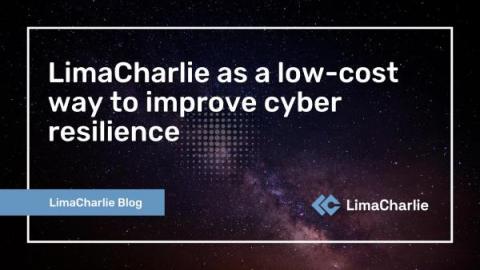Security | Threat Detection | Cyberattacks | DevSecOps | Compliance
Incident Response
Stories from the SOC - The case for human response actions
As we move towards more automation, we should remember the risk of over-automating, or at least make a conscious decision to accept the risks. This is especially important in automating response actions, which left unchecked could wreak havoc with day-to-day business operations.
LimaCharlie as a low-cost way to improve cyber resilience
Organizations know that they need to become more cyber resilient, and are asking MSSPs and enterprise security teams to help. But in a time of economic uncertainty and shrinking budgets, the goal of cyber resilience is often at odds with what management is prepared to invest. The good news is that LimaCharlie can be used to help security professionals improve cyber resilience—with a level of control and at a cost efficiency unparalleled industrywide.
The Masterclass Series - Career Development & Incident Response
What Can Managed Detection and Response (MDR) Do for Businesses
Businesses should make cyber security a top priority. Learn what managed detection and response (MDR) can do for your business.
8 Steps Every Incident Response Plan Requires to Spot, Contain and Recover From an Attack
The popular saying “Keep Calm and Carry On” is a good mantra for any company that finds itself undergoing cyberattack, but what that pithy phrase does not mention is how one stays calm when a threat actor has locked down your system and is demanding a multimillion-dollar ransom?
How to Build a Solid Incident Response Team
In today's increasingly digitized world, nearly every aspect of our personal and corporate lives is connected to the internet, making cyber security an essential component of ensuring the safety and security of our organizations and all of our professional activities. One of the most important steps you can take to protect your organization's cybersecurity posture and respond to incidents quickly and effectively is creating a solid cybersecurity incident response team.
Understanding the Incident Response Life Cycle
With the growing digitalization of businesses, the threat of cyber-attacks has become a reality for organizations of all sizes. It's vital for companies to be aware and proactive in understanding how to detect, respond to, and recover from cyber-attacks as technology becomes increasingly integrated into daily business operations.










